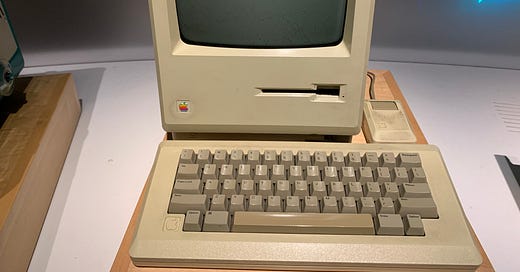A version of this column appeared in the Sunday, Dec. 15, 2024 The Gazette (Cedar Rapids, IA)
Buy USA, if you can
It is the middle of retail department store at Christmas time. The store is decorated with so many lights that counting stars in the sky might be easier.
Clothes are hanging on racks or stacked on shelves. Signs tell you what you want to know. Save 25%. Save 75%.
The store is packed with shoppers who, more likely than not, cast their vote for president thinking their food and clothing prices are too high. Now, however, they are filling a store’s aisles, waiting in lines, waiting for a worker to send them to an open checkout person. It is a robust scene, with people eager to spend money.
Another store. In the jewelry showcase sits something called lab growing diamonds. These gems, it turns out, are made in a laboratory to look like diamonds, using the same chemicals that make diamonds. Who knew?
And, I find myself thinking, I thought we couldn’t afford this stuff.
With so much shopping, maybe the prices for goods weren’t the driving factor in Donald Trump’s election that some thought they were. Maybe it was more of Americans fearing their jobs would be taken away and that the infiltration of imports from other countries, combined with undocumented immigration, would threatened their livelihood. Or, just immigrants.
A not-so-casual check of clothing labels reveals where clothes we buy are made. America first: a nice top that a teenaged girl could wear, made in USA. Also made in the USA, a headband. Interestingly, Postcard from England items are made in the USA.
But, overwhelmingly the “Made in the USA” items shoppers say they want are scarce. Instead, one item reads Made in China. Next item, Made in China. And, so on, it goes. Made in China. Made in China.
Made in Mexico is sprinkled into the mix on this check. Then, back to Made in China, over and over. Another piece of clothing and, yup, made in China. Nice twist with a black and gold, plaid blouse with Herky and Iowa Hawkeyes on the back: “This garment was ‘proudly designed in South Dakota and made responsibly in China.’”
Another store, with door busters sales and blowout sales signs. Made in China. Hecho en China. Fabrique en Chine. A sweater, made in China. A “The Golden Girls” TV show calendar, a “Friends” calendar. For the sake of brevity, may we reach consensus that a lot of stuff sold in retail stores and malls is made in China?
Other countries send clothing to U.S. stores. The check of labels reveals Made in Vietnan. Cambodia, too. Made in Jordan. In Pakistan. In El Salvador and Nicaragua.
We read and hear about how President-elect Trump wants to impose tariffs that economists predict will create U.S. trade deficits because of retaliatory tariffs. Economic analysts show how tariffs the first Trump Administration imposed on other countries resulted in higher U.S. prices and did not return manufacturing jobs to this country.
But, shop we must, blissfully without knowing how huge our role in this picture is. Americans say they want to crack down on unfair competition from foreign manufacturers but don’t shop that way.
So, try checking clothing tags during your Christmas shopping. Good luck weening yourself from clothes made in China, Mexico, Pakistan, or anywhere but the United States.
Lyle Muller is a long-time Iowa journalist who, in retirement, keeps busy as the professional adviser for Grinnell College’s Scarlet & Black newspaper, a board member of the Midwest Center for Investigative Reporting and Iowa High School Press Association, and a trustee of the Iowa Freedom of Information Council. He is a former executive director/editor of the Iowa Center for Public Journalism that became part of the Midwest Center, former editor of The Gazette (Cedar Rapids), and a recipient of the Iowa Newspaper Association’s Distinguished Service Award.




